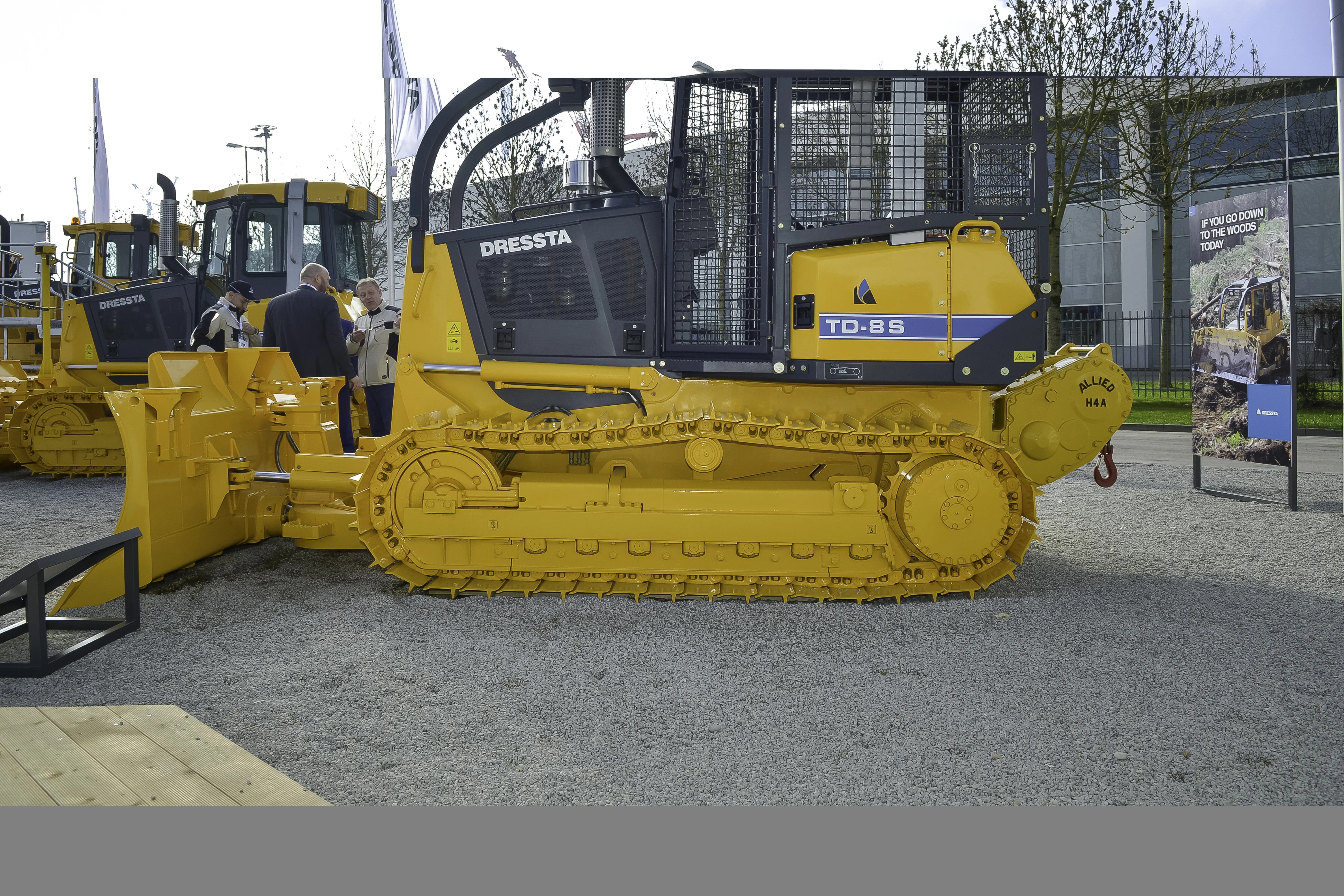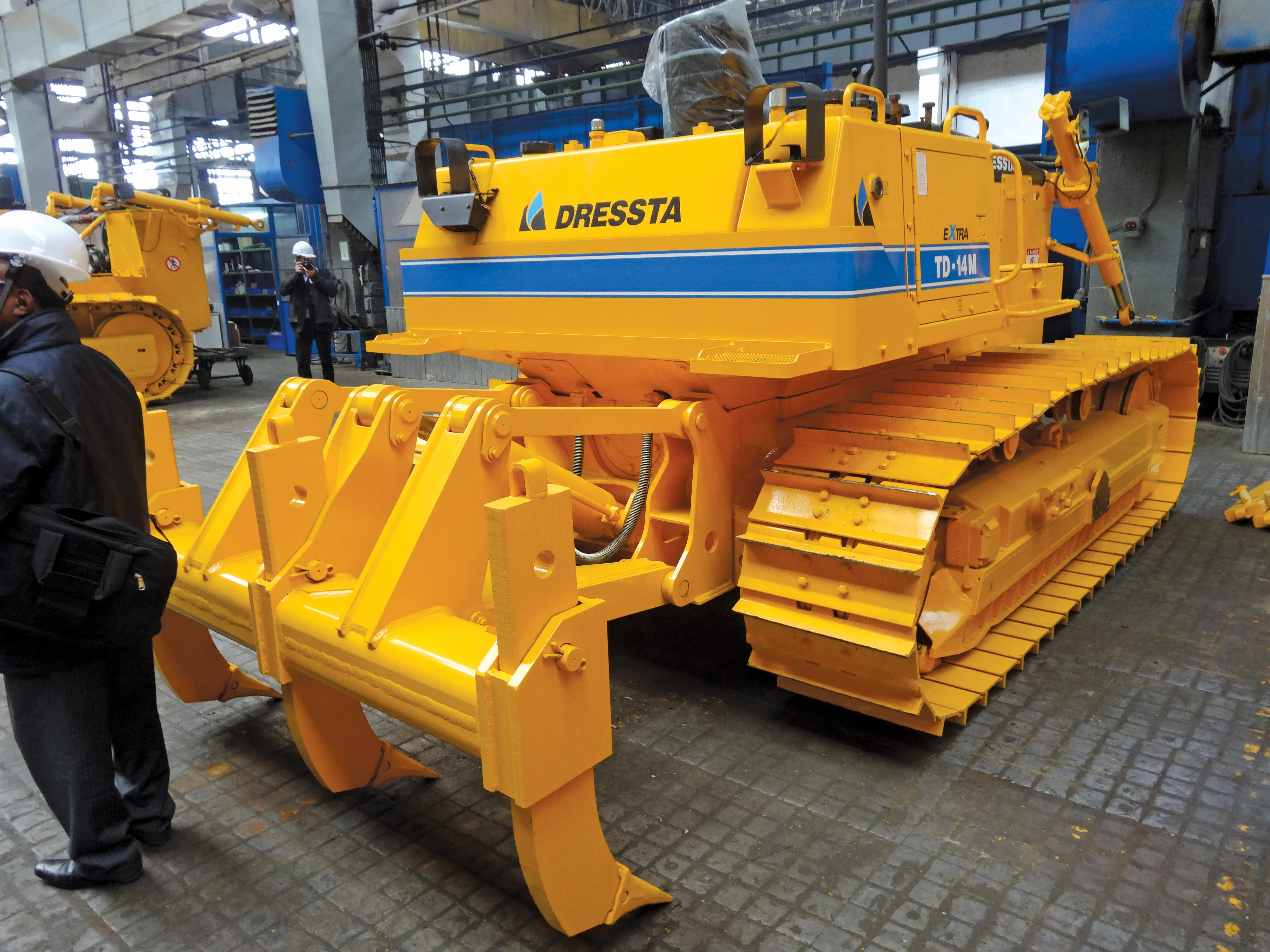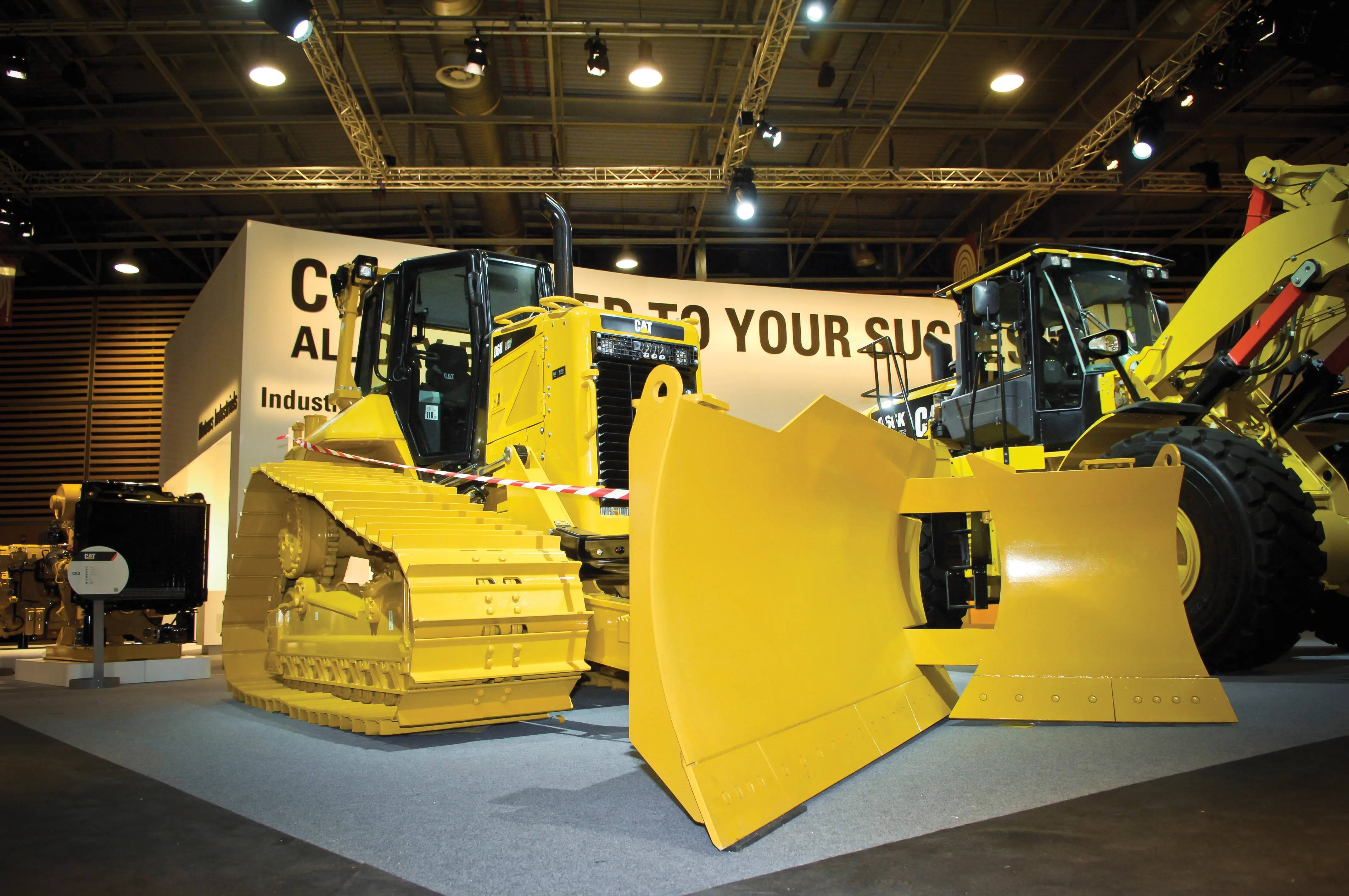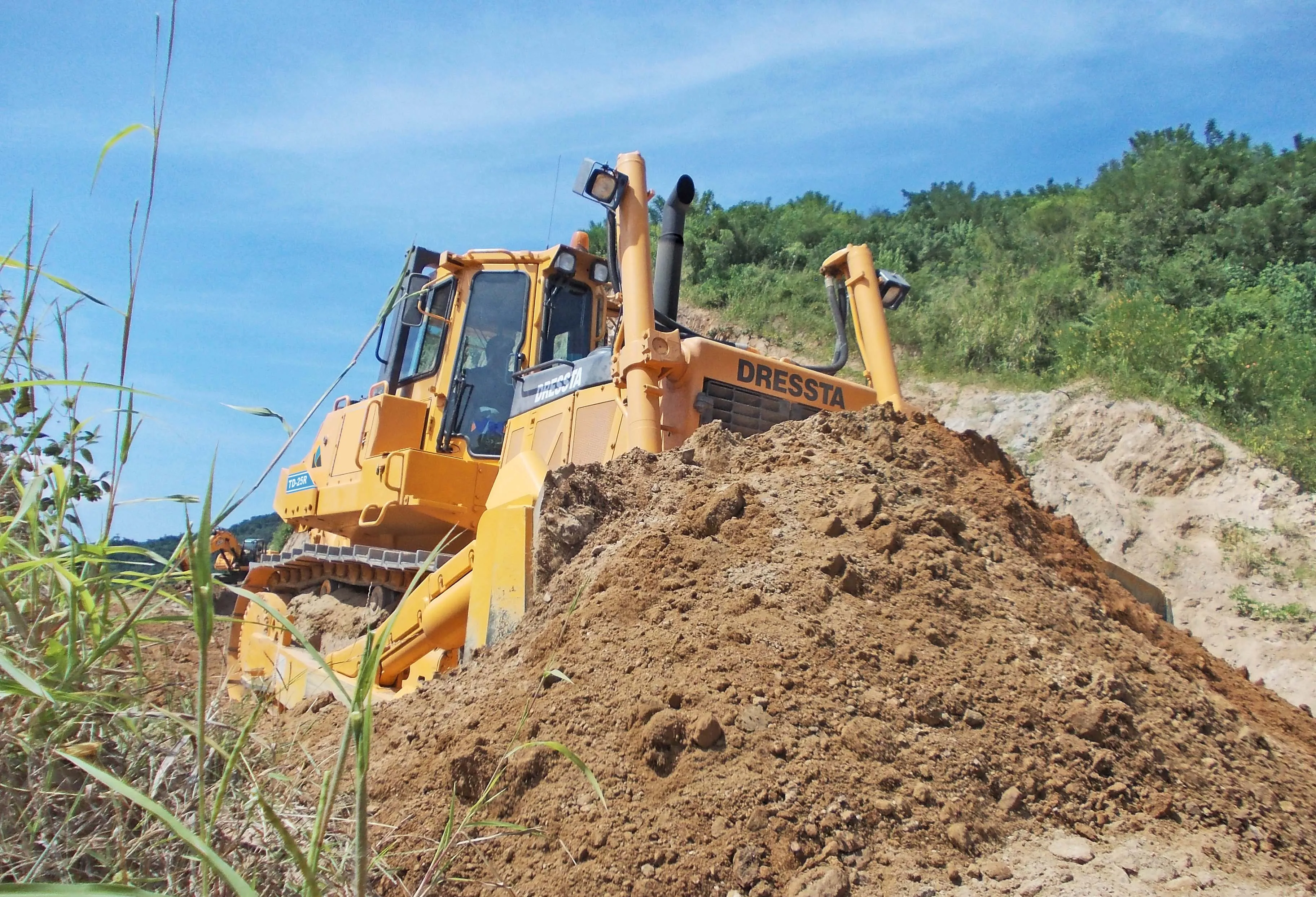
The TD-8S and TD-9S Tier 4 Final/Stage IV compliant models, weighing in at 10-10.3 and 11-11.3tonnes respectively, represent the next generation of the LiuGong Group-owned Polish manufacturer’s first models of its new generation S-series dozers.
“Hydrostatic drive allows infinite speed control with counter motion capability,” said LiuGong Group vice president for R&D David Beatenbough. “The TD-9S is in our landscaper spec. Landscaping with dozers is a big application in North America, but we’re starting to see requests for this classification in Europe as well. Requirements for this dozer are fine controllability and precision. The machine must be nimble. A dual path hydrostatic drive system provides a smoother operation.
“Special features on our landscape [TD-9S] version include the Blade Shaker, allowing the blade to clean at the end of a fine pass, leaving no untidy piles that must be smoother later.”
Dressta’s new hydrostatic drive S-series dozer duo are powered by Cummins QSF 3.8 diesels rated at 73kW for the TD-8S and 84kW for the TD-9S. Both models have new cabs, some 30% larger and with 15% more glass area. Ergonomic controls are fitted and an LCD touchscreen in the cab also gives the operator access to key machine parameters.









